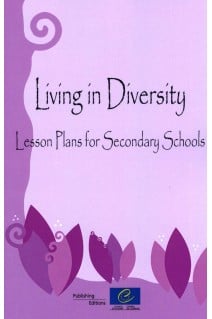



This handbook was produced in the framework of the pilot project "Intercultural and interfaith dialogue through education", part of the Council of Europe-European Commission joint programme "Fostering a culture of human rights in South Caucasus and Ukraine" (2006-2009).The Council of Europe is strongly committed to the promotion of an cultural perspective in education and has played a major role, not only in the development and promotion of a coherent theoretical reference framework in this field, but also in the development of methodological guidelines and in the production of educational resources that can be used in teaching and training in both formal and non-formal education.The content of this handbook is based on the proposals for educational activities that were developed by the teachers and trainers from Armenia, Azerbaijan, Georgia and Ukraine who took part in the project. The activities presented here cover a range of topics associated with intercultural education that correspond to some of the key elements and competences that the Council of Europe considers to be fundamental for intercultural education.The handbook should be seen as a tool for teachers of different subjects who want to integrate an intercultural dimension in their practice. It can also act as a useful resource for teacher trainers in this field.
Introduction
Intercultural dialogue through education
For an intercultural perspective in education
Delving deeper
What does the handbook offer?
How to use the handbook
Reflection on the process and perspectives for advancing intercultural education
Managing diversity
Brainstorming session on religious diversity in Armenia
Religious diversity in Armenia
At the crossroads of traditions and religions - past and present
One country, many cultures
Religious diversity in Azerbaijan
Religious holidays of the peoples of Azerbaijan
Our city/village - a multicultural and multi-religious place
Ukrainian-Romanian interferences in the history of Lviv and beyond
Overcoming prejudices
Gender stereotypes
Foreign soldiers in my country
Women's identity on a historical timeline
Equality, inclusion, human rights education
Respect for children with disabilities
The Islamic headscarf
Learning Russian?
World football
Helping children with special needs
In-service teacher training on intercultural and inter-religious education
Tolerance and mutual respect
"What tolerance and diversity mean to me"- a school competition of artistic works
Inter-school forum theatre on diversity and tolerance
Tolerance in a democratic society
A Tbilisi courtyard
People around me
Teaching multiperspectivity
Soviet policy on religion from 1920 to 1939 in Azerbaijan
Social and cultural differences in Ukrainian lands in the 18th and 19th centuries, under the Russian and Austrian empires
Conflict resolution
Critical incidents in schools
A virtual trip to Abkhazia and Imereti
Our homeland 20 years from now
Appendices
Appendix 1 - Discussion pointers for intercultural education policy, training and education
1. Intercultural dialogue, essential but not "natural"
2. The meaning of "intercultural"
3. Intercultural education and related approaches
4. Methodological approaches to learning and teaching
5. Intercultural training of teachers, trainers and the range of educational staff
6. Shared responsibility
Further reading
Appendix 2 - Workshop participants
Download an extract (1000)

This handbook was produced in the framework of the pilot project "Intercultural and interfaith dialogue through education", part of the Council of Europe-European Commission joint programme "Fostering a culture of human rights in South Caucasus and Ukraine" (2006-2009).The Council of Europe is strongly committed to the promotion of an cultural perspective in education and has played a major role, not only in the development and promotion of a coherent theoretical reference framework in this field, but also in the development of methodological guidelines and in the production of educational resources that can be used in teaching and training in both formal and non-formal education.The content of this handbook is based on the proposals for educational activities that were developed by the teachers and trainers from Armenia, Azerbaijan, Georgia and Ukraine who took part in the project. The activities presented here cover a range of topics associated with intercultural education that correspond to some of the key elements and competences that the Council of Europe considers to be fundamental for intercultural education.The handbook should be seen as a tool for teachers of different subjects who want to integrate an intercultural dimension in their practice. It can also act as a useful resource for teacher trainers in this field.
Please note that in accordance with our terms & conditions, PDF/epubs may only be purchased by private individuals.
